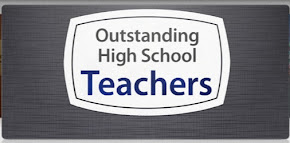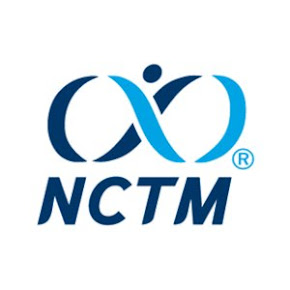I've always wanted to be featured on iTunes...I'm just not musical
This past week a way cool thing happened to me. Apple listed my Open Geometry Course as one of the "8 Outstanding High School Courses" in the K-12 iTunesU space. I thought I would take a page to reflect on my iTunesU experience and offer some thoughts on how I went about creating my course.The journey with iTunesU started last school year when a rep from Apple Education contacted me and invited a colleague of mine, Shawn Jacob, and myself out to Cupertino to work with dozens of other educators from around the nation to develop courses for the K-12 iTunesU site.
While there, we worked in content area teams to break up the work and start in on the process of curating content for our courses. I had several distinct advantages. First, I had just spent a year teaching in a 1:1 iPad environment. Second, I was equipped with tons of great digital content that my colleagues and I had developed over the year. Third, I had flipped my class and was using my own videos, iBooks Author files, and my own online quizzes that were ready to be inserted into iTunesU. Finally, I was already using an LMS to distribute content to students so I had a good idea of how iTunesU could effectively be used, even though it is not a full blown learning management system.
Thoughts on creating your iTunesU course.
Things to know prior to building.
 - iTunesU is a great place to host content and help students keep their digital artifacts organized.
- iTunesU is a great place to host content and help students keep their digital artifacts organized.-iTunesU is not a place to host teacher-student dialogue and threaded discussions (not yet at least- hoping it will be in the future).
-iTunesU is not a place to collect and grade assignments.
-iTunesU works best with the iPad but content can be found in iTunes.
1. Pre-requisites. In order to build a course you will need and Apple I.D. and the link to the course manager site opened in Safari. You can use other browsers, however, Apple suggests using Safari.
3. Start small with the idea that you will build your content over the year. Don't feel that you have to have a complete course ready to go at the beginning of the year. Choose to do a course in session as opposed to a self-paced course, this way there will be less pressure on you to post content ahead of schedule.
4. Curate and create. Remember this is a list of resources that you are pointing your subscribers to. The digital content doesn't have to all be created by you. There is plenty of great content out there on the web already that is licensed under creative commons share-alike code. Be mindful of licensing because you are placing this in your course and if it is public anyone can access it. So, if you're wondering "can I place worksheets from my textbook publisher into my iTunesU course"? I would contact them first and ask. With that said, there are ways to make courses private to your students only and share the class subscription code with them.
5. Add tons of media-rich interactive learning modules. iTunesU course manager allows you to upload links from the web or iTunes/iBooks/App store, documents such as pdfs and keynote, and videos. Students can download video content for viewing offline. So there are some advantages to uploading the video instead of just pointing at a YouTube link. Apple gives you 20GB's of space so I wouldn't worry too much about running out of room.
6. Create meaningful posts full of descriptive and action oriented words. These posts will show up on student iPads as assignments so it is best to be very clear about what you would like students to do with what you are sending them. Assignments should start off with action words such as watch, summarize, read, etc. Think about the flow of your posts. Do they make sense for students? Are they organized in a way that is intuitive for students? Do students know what is expected from a particular post? iTunesU is a great place to host and distribute content, however there are no discussion board features for students to post questions and interact.
7. Leverage the note syncing features. Another nice feature of iTunesU is that if you are linking to any books or videos, iTunesU will sync notes from across all these types of posts into one place in iTunesU called the Notes. This makes it really handy for students to go back and review what they have been watching and reading.
Overall iTunesU, while not perfect, can be a powerful space to help students organize and access their work. If I were to add features to iTunesU I would want to see the ability for teachers and students to communicate, the collaborative and interactive piece of this platform could certainly be developed. I would also like to see the ability to embed widgets (similar to iBooks Author). This would also allow for students to interact with content right from within iTunesU. Finally, I would love to see the note taking feature support digital inking. While the notes are a great way for students to study, not all information can be captured via text input.













.JPG)






